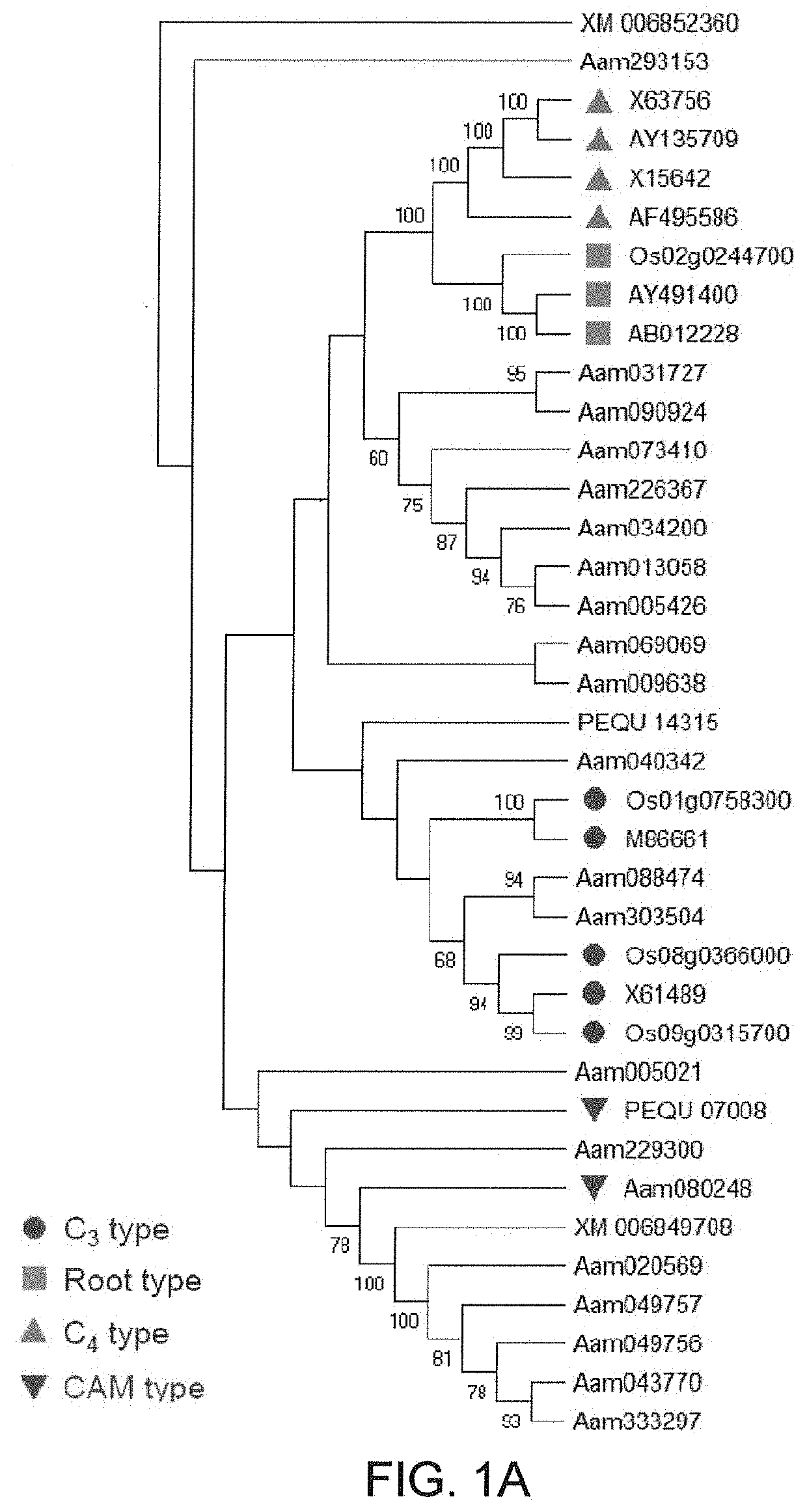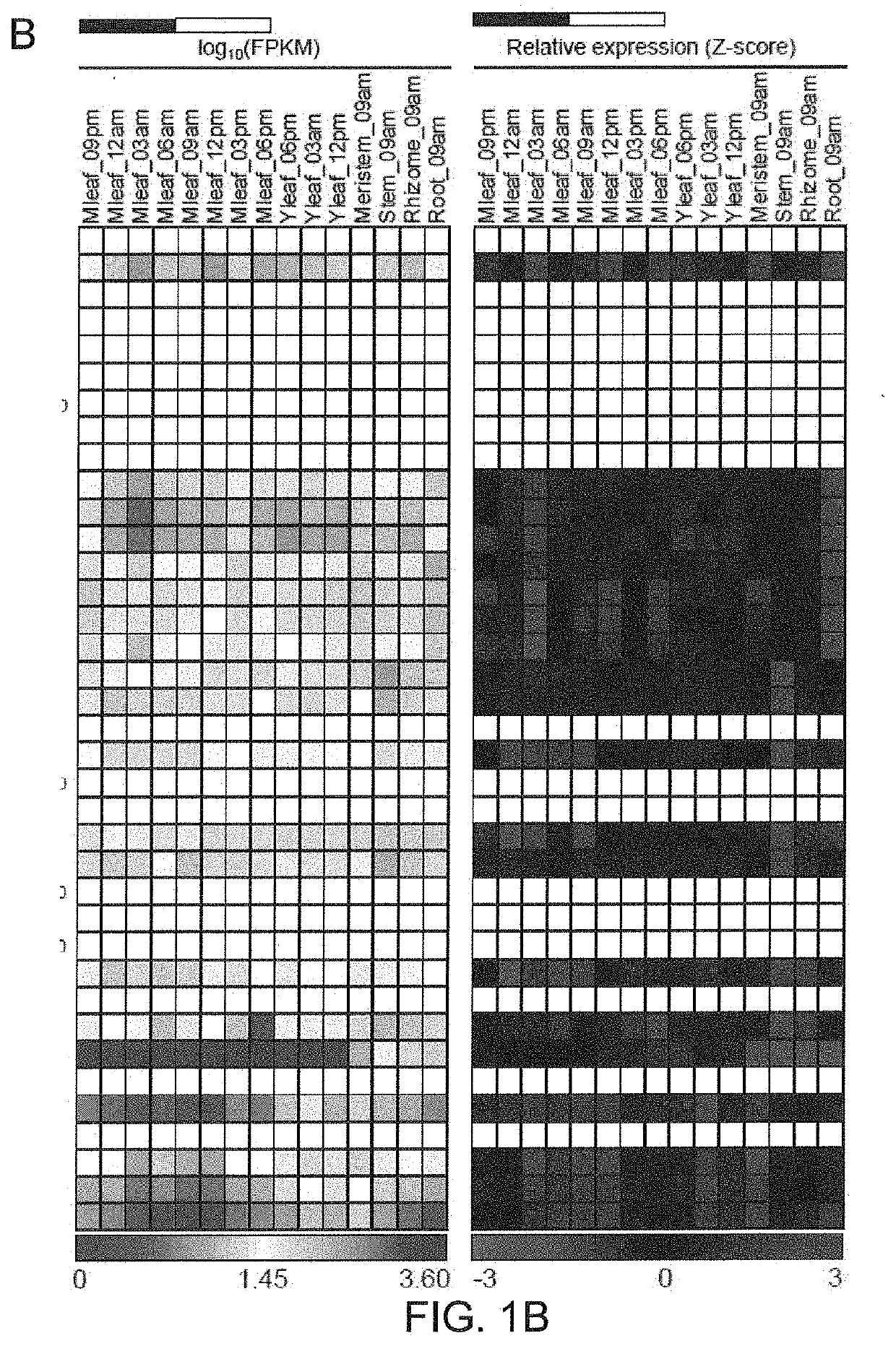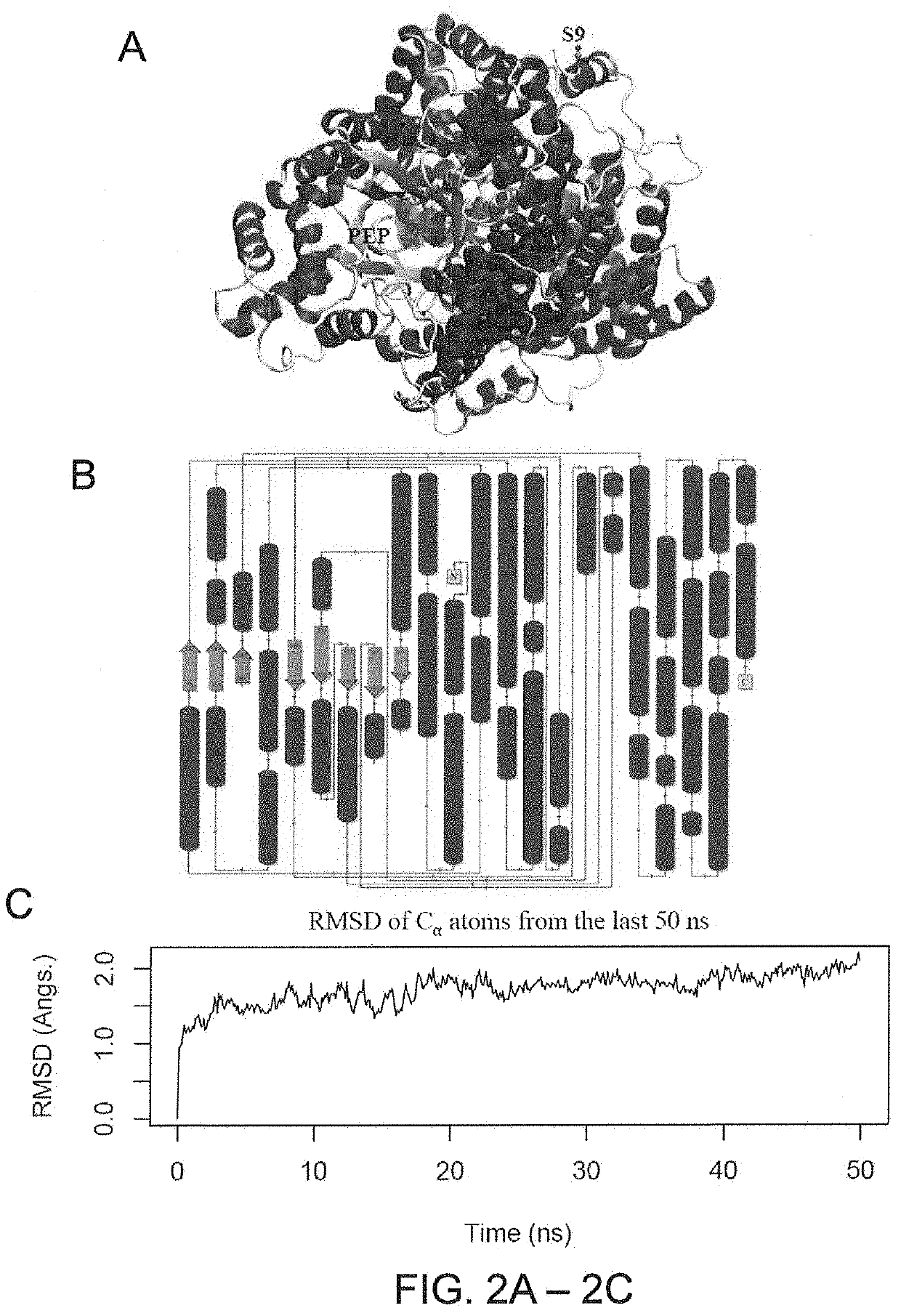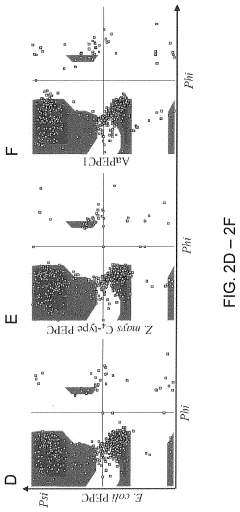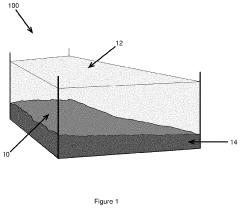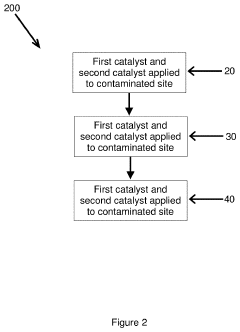Sodium Acetate’s Potential in Climate‑Resilient Agricultural Techniques
JUN 30, 20259 MIN READ
Generate Your Research Report Instantly with AI Agent
Patsnap Eureka helps you evaluate technical feasibility & market potential.
Sodium Acetate in Agriculture: Background and Objectives
Sodium acetate, a compound formed by the combination of sodium and acetic acid, has emerged as a promising agent in the realm of climate-resilient agricultural techniques. The exploration of this compound's potential in agriculture stems from the urgent need to address the challenges posed by climate change to global food security and sustainable farming practices.
The agricultural sector has long been vulnerable to the impacts of climate change, including extreme weather events, shifting precipitation patterns, and rising temperatures. These factors have led to increased crop failures, reduced yields, and heightened food insecurity in many regions worldwide. As a result, researchers and agronomists have been actively seeking innovative solutions to enhance crop resilience and adaptability to changing environmental conditions.
Sodium acetate's journey in agriculture began with its well-established use in various industrial applications, including as a food preservative and de-icing agent. However, recent studies have uncovered its potential to mitigate the effects of environmental stressors on plants, particularly in the context of drought and salinity tolerance.
The primary objective of investigating sodium acetate in agriculture is to develop novel strategies for improving crop performance under adverse climatic conditions. This includes enhancing plant growth, increasing stress tolerance, and ultimately boosting crop yields in challenging environments. By leveraging the unique properties of sodium acetate, researchers aim to create more resilient agricultural systems that can withstand the pressures of a changing climate.
One of the key areas of focus is the compound's ability to act as an osmolyte, helping plants maintain cellular water balance under drought conditions. Additionally, sodium acetate has shown promise in modulating plant metabolic processes, potentially enhancing their ability to cope with various environmental stressors.
The exploration of sodium acetate in agriculture aligns with broader efforts to develop climate-smart farming practices. These practices aim to increase agricultural productivity and income while adapting to and building resilience against climate change. By incorporating sodium acetate into existing agricultural techniques, researchers hope to create a more robust and sustainable food production system.
As the global population continues to grow and climate change intensifies, the need for innovative agricultural solutions becomes increasingly critical. The investigation of sodium acetate's potential in this context represents a significant step towards addressing these challenges. Through rigorous research and field trials, scientists aim to unlock the full potential of this compound and integrate it into practical, scalable solutions for farmers worldwide.
The agricultural sector has long been vulnerable to the impacts of climate change, including extreme weather events, shifting precipitation patterns, and rising temperatures. These factors have led to increased crop failures, reduced yields, and heightened food insecurity in many regions worldwide. As a result, researchers and agronomists have been actively seeking innovative solutions to enhance crop resilience and adaptability to changing environmental conditions.
Sodium acetate's journey in agriculture began with its well-established use in various industrial applications, including as a food preservative and de-icing agent. However, recent studies have uncovered its potential to mitigate the effects of environmental stressors on plants, particularly in the context of drought and salinity tolerance.
The primary objective of investigating sodium acetate in agriculture is to develop novel strategies for improving crop performance under adverse climatic conditions. This includes enhancing plant growth, increasing stress tolerance, and ultimately boosting crop yields in challenging environments. By leveraging the unique properties of sodium acetate, researchers aim to create more resilient agricultural systems that can withstand the pressures of a changing climate.
One of the key areas of focus is the compound's ability to act as an osmolyte, helping plants maintain cellular water balance under drought conditions. Additionally, sodium acetate has shown promise in modulating plant metabolic processes, potentially enhancing their ability to cope with various environmental stressors.
The exploration of sodium acetate in agriculture aligns with broader efforts to develop climate-smart farming practices. These practices aim to increase agricultural productivity and income while adapting to and building resilience against climate change. By incorporating sodium acetate into existing agricultural techniques, researchers hope to create a more robust and sustainable food production system.
As the global population continues to grow and climate change intensifies, the need for innovative agricultural solutions becomes increasingly critical. The investigation of sodium acetate's potential in this context represents a significant step towards addressing these challenges. Through rigorous research and field trials, scientists aim to unlock the full potential of this compound and integrate it into practical, scalable solutions for farmers worldwide.
Market Analysis for Climate-Resilient Agricultural Solutions
The market for climate-resilient agricultural solutions is experiencing significant growth as the global agricultural sector faces increasing challenges due to climate change. Extreme weather events, shifting precipitation patterns, and rising temperatures are driving demand for innovative technologies and practices that can enhance crop resilience and maintain productivity under adverse conditions.
Sodium acetate, a compound with unique properties, is emerging as a potential solution in this market. Its ability to store and release heat energy, coupled with its non-toxic nature, positions it as an attractive option for developing climate-resilient agricultural techniques. The market for such solutions is expected to expand rapidly in the coming years, driven by the urgent need to adapt farming practices to changing environmental conditions.
The adoption of climate-resilient agricultural solutions varies across regions, with developed countries currently leading in implementation. However, developing nations, particularly those most vulnerable to climate change impacts, are showing increasing interest and investment in these technologies. This trend is likely to accelerate as the effects of climate change become more pronounced and governments prioritize agricultural resilience in their policy frameworks.
Key market segments for climate-resilient agricultural solutions include crop protection, soil management, water conservation, and temperature regulation. Sodium acetate's potential applications span several of these segments, particularly in temperature regulation and frost protection for sensitive crops. This versatility enhances its market potential and aligns with the growing demand for multi-functional agricultural solutions.
The market is characterized by a mix of established agricultural technology companies and innovative startups. Large agribusinesses are investing in research and development of climate-resilient solutions, while smaller companies are often at the forefront of developing novel applications for materials like sodium acetate. This dynamic is fostering a competitive environment that is driving innovation and accelerating the development of new products and techniques.
Farmers and agricultural enterprises are increasingly recognizing the economic benefits of adopting climate-resilient practices. The potential for improved crop yields, reduced losses from extreme weather events, and enhanced resource efficiency are key drivers of market growth. As awareness of these benefits spreads, the demand for solutions like those based on sodium acetate is expected to rise.
Government policies and international initiatives aimed at promoting sustainable agriculture and climate change adaptation are also playing a crucial role in shaping the market. Subsidies, research grants, and regulatory support for climate-resilient agricultural practices are creating favorable conditions for market expansion and technology adoption.
Sodium acetate, a compound with unique properties, is emerging as a potential solution in this market. Its ability to store and release heat energy, coupled with its non-toxic nature, positions it as an attractive option for developing climate-resilient agricultural techniques. The market for such solutions is expected to expand rapidly in the coming years, driven by the urgent need to adapt farming practices to changing environmental conditions.
The adoption of climate-resilient agricultural solutions varies across regions, with developed countries currently leading in implementation. However, developing nations, particularly those most vulnerable to climate change impacts, are showing increasing interest and investment in these technologies. This trend is likely to accelerate as the effects of climate change become more pronounced and governments prioritize agricultural resilience in their policy frameworks.
Key market segments for climate-resilient agricultural solutions include crop protection, soil management, water conservation, and temperature regulation. Sodium acetate's potential applications span several of these segments, particularly in temperature regulation and frost protection for sensitive crops. This versatility enhances its market potential and aligns with the growing demand for multi-functional agricultural solutions.
The market is characterized by a mix of established agricultural technology companies and innovative startups. Large agribusinesses are investing in research and development of climate-resilient solutions, while smaller companies are often at the forefront of developing novel applications for materials like sodium acetate. This dynamic is fostering a competitive environment that is driving innovation and accelerating the development of new products and techniques.
Farmers and agricultural enterprises are increasingly recognizing the economic benefits of adopting climate-resilient practices. The potential for improved crop yields, reduced losses from extreme weather events, and enhanced resource efficiency are key drivers of market growth. As awareness of these benefits spreads, the demand for solutions like those based on sodium acetate is expected to rise.
Government policies and international initiatives aimed at promoting sustainable agriculture and climate change adaptation are also playing a crucial role in shaping the market. Subsidies, research grants, and regulatory support for climate-resilient agricultural practices are creating favorable conditions for market expansion and technology adoption.
Current Applications and Challenges of Sodium Acetate in Farming
Sodium acetate has gained significant attention in recent years for its potential applications in climate-resilient agricultural techniques. Currently, this compound is being utilized in various farming practices, primarily as a soil amendment and plant growth regulator. Its ability to improve soil structure and enhance nutrient uptake has made it a valuable tool for farmers facing challenges related to soil degradation and changing climate conditions.
One of the primary applications of sodium acetate in agriculture is as a soil conditioner. When applied to soil, it helps to improve soil aggregation, increase water retention capacity, and enhance overall soil structure. This is particularly beneficial in areas prone to drought or excessive rainfall, as it helps maintain optimal soil moisture levels for crop growth. Additionally, sodium acetate has been shown to increase the availability of essential nutrients, such as phosphorus and potassium, making them more accessible to plant roots.
Another significant application of sodium acetate is its use as a foliar spray. When applied directly to plant leaves, it can stimulate growth, improve photosynthetic efficiency, and enhance overall plant vigor. This has proven especially effective in greenhouse cultivation and high-value crop production, where maximizing yield and quality is crucial.
Despite its promising applications, the use of sodium acetate in farming faces several challenges. One of the primary concerns is the potential for soil salinization, particularly in areas with already high salt content. Excessive application of sodium acetate can lead to an accumulation of sodium ions in the soil, potentially harming plant growth and altering soil microbial communities. Careful management and precise application rates are necessary to mitigate this risk.
Another challenge is the limited understanding of sodium acetate's long-term effects on soil ecosystems. While short-term benefits have been observed, more research is needed to assess its impact on soil microorganisms, nutrient cycling, and overall soil health over extended periods. This knowledge gap hinders widespread adoption and necessitates cautious implementation in large-scale agricultural systems.
The cost-effectiveness of sodium acetate application also presents a challenge, especially for small-scale farmers. The production and transportation costs of sodium acetate can be significant, potentially limiting its accessibility to farmers in developing regions or those operating on tight budgets. Developing more cost-effective production methods and exploring local sourcing options are crucial steps in addressing this challenge.
Lastly, the regulatory landscape surrounding sodium acetate use in agriculture remains complex and varies across different regions. Establishing clear guidelines for its application, addressing safety concerns, and harmonizing regulations across countries are essential for its widespread adoption in climate-resilient agricultural practices.
One of the primary applications of sodium acetate in agriculture is as a soil conditioner. When applied to soil, it helps to improve soil aggregation, increase water retention capacity, and enhance overall soil structure. This is particularly beneficial in areas prone to drought or excessive rainfall, as it helps maintain optimal soil moisture levels for crop growth. Additionally, sodium acetate has been shown to increase the availability of essential nutrients, such as phosphorus and potassium, making them more accessible to plant roots.
Another significant application of sodium acetate is its use as a foliar spray. When applied directly to plant leaves, it can stimulate growth, improve photosynthetic efficiency, and enhance overall plant vigor. This has proven especially effective in greenhouse cultivation and high-value crop production, where maximizing yield and quality is crucial.
Despite its promising applications, the use of sodium acetate in farming faces several challenges. One of the primary concerns is the potential for soil salinization, particularly in areas with already high salt content. Excessive application of sodium acetate can lead to an accumulation of sodium ions in the soil, potentially harming plant growth and altering soil microbial communities. Careful management and precise application rates are necessary to mitigate this risk.
Another challenge is the limited understanding of sodium acetate's long-term effects on soil ecosystems. While short-term benefits have been observed, more research is needed to assess its impact on soil microorganisms, nutrient cycling, and overall soil health over extended periods. This knowledge gap hinders widespread adoption and necessitates cautious implementation in large-scale agricultural systems.
The cost-effectiveness of sodium acetate application also presents a challenge, especially for small-scale farmers. The production and transportation costs of sodium acetate can be significant, potentially limiting its accessibility to farmers in developing regions or those operating on tight budgets. Developing more cost-effective production methods and exploring local sourcing options are crucial steps in addressing this challenge.
Lastly, the regulatory landscape surrounding sodium acetate use in agriculture remains complex and varies across different regions. Establishing clear guidelines for its application, addressing safety concerns, and harmonizing regulations across countries are essential for its widespread adoption in climate-resilient agricultural practices.
Existing Sodium Acetate-Based Agricultural Solutions
01 Use of sodium acetate in heat storage materials
Sodium acetate is utilized in heat storage materials due to its phase change properties. It can absorb and release heat during phase transitions, making it suitable for thermal energy storage applications. These materials can be used in various heating and cooling systems to improve energy efficiency.- Use of sodium acetate in chemical processes: Sodium acetate is widely used in various chemical processes as a reagent, catalyst, or buffer. It plays a role in reactions such as acetylation, esterification, and pH control. The compound's properties make it valuable in industrial applications, including the production of pharmaceuticals, textiles, and other chemical products.
- Application in heat storage and thermal management: Sodium acetate trihydrate is utilized in heat storage systems and thermal management applications. Its phase change properties allow it to store and release latent heat, making it useful in heating pads, hand warmers, and energy storage systems. This application takes advantage of the compound's ability to undergo supercooling and crystallization.
- Use in food industry and preservation: Sodium acetate is employed in the food industry as a preservative and flavoring agent. It helps regulate acidity in food products, enhances flavor, and extends shelf life. The compound is particularly useful in bakery products, snacks, and processed foods, where it contributes to texture and taste while inhibiting microbial growth.
- Application in wastewater treatment: Sodium acetate is used in wastewater treatment processes, particularly in biological treatment systems. It serves as a carbon source for microorganisms involved in denitrification and other biodegradation processes. The compound helps maintain optimal conditions for bacterial growth and enhances the efficiency of wastewater treatment plants.
- Use in material science and nanotechnology: Sodium acetate finds applications in material science and nanotechnology. It is used in the synthesis of various nanoparticles, thin films, and advanced materials. The compound's role in these processes includes acting as a precursor, stabilizer, or structure-directing agent, contributing to the development of novel materials with unique properties.
02 Sodium acetate in food preservation and packaging
Sodium acetate is employed in food preservation and packaging solutions. It acts as a preservative and pH regulator, helping to extend the shelf life of food products. Additionally, it can be incorporated into packaging materials to create active or intelligent packaging systems that monitor or control food quality.Expand Specific Solutions03 Production methods for sodium acetate
Various methods are developed for the production of sodium acetate. These may include chemical reactions involving acetic acid and sodium-containing compounds, as well as biotechnological approaches using microbial fermentation. The production processes aim to improve yield, purity, and cost-effectiveness.Expand Specific Solutions04 Sodium acetate in pharmaceutical formulations
Sodium acetate is used in pharmaceutical formulations as a buffering agent, pH adjuster, or electrolyte replacement. It can be incorporated into various drug delivery systems, including injectable solutions, oral formulations, and topical preparations to enhance stability and efficacy of active ingredients.Expand Specific Solutions05 Applications of sodium acetate in industrial processes
Sodium acetate finds applications in various industrial processes. It can be used as a catalyst or reagent in chemical reactions, as a de-icing agent for roads and runways, and in textile manufacturing for dyeing and printing processes. Its properties make it versatile for use in multiple industries.Expand Specific Solutions
Key Players in Sodium Acetate and Agricultural Innovation
The development of sodium acetate-based climate-resilient agricultural techniques is in its early stages, with a growing market potential as climate change impacts intensify. The technology's maturity is still evolving, with research institutions like Commonwealth Scientific & Industrial Research Organisation and universities such as Xiamen University and North Carolina State University leading the way. Companies like Climeworks AG and Sunamp Ltd. are exploring related applications in carbon capture and thermal energy storage. The competitive landscape is diverse, involving both established agricultural research organizations like Embrapa and innovative startups like Akplanta Co., Ltd. As the technology progresses, collaboration between academic institutions and industry players will likely drive advancements in this field.
Commonwealth Scientific & Industrial Research Organisation
Technical Solution: CSIRO has developed a novel approach utilizing sodium acetate as a soil amendment to enhance crop resilience in drought-prone areas. Their research focuses on the hygroscopic properties of sodium acetate, which can absorb moisture from the air and release it slowly into the soil. This technique has shown promising results in maintaining soil moisture levels during dry periods, potentially reducing irrigation needs by up to 30% [1]. CSIRO's method involves incorporating sodium acetate crystals into the soil at specific depths, creating a moisture reservoir that plants can access during water-scarce conditions. Field trials have demonstrated increased crop yields of 15-20% in water-stressed environments compared to untreated plots [3].
Strengths: Innovative use of sodium acetate's hygroscopic properties; Significant reduction in irrigation needs; Improved crop yields in water-stressed conditions. Weaknesses: Potential long-term effects on soil chemistry need further study; May require initial investment in sodium acetate application technology.
The Grains Research & Development Corp.
Technical Solution: The Grains Research & Development Corp. (GRDC) has been exploring the use of sodium acetate in combination with other soil amendments to improve water retention and nutrient availability in grain crops. Their approach involves creating a slow-release formulation of sodium acetate mixed with organic matter and essential nutrients. This formulation is designed to not only retain moisture but also enhance nutrient uptake efficiency. GRDC's research has shown that this method can increase water use efficiency by up to 25% in wheat and barley crops [2]. Additionally, their studies indicate a potential reduction in fertilizer use by 10-15% due to improved nutrient retention in the soil [4].
Strengths: Holistic approach combining water retention and nutrient management; Potential for significant reduction in water and fertilizer use. Weaknesses: Complexity in formulation may increase production costs; Effectiveness may vary across different soil types and climatic conditions.
Core Innovations in Sodium Acetate for Climate Resilience
Genes for enhancing salt and drought tolerance in plants and methods of use
PatentActiveUS20200239901A1
Innovation
- Introduction of a nucleic acid encoding a crassulacean acid metabolism (CAM)-specific phosphoenolpyruvate carboxylase (PEPC) enzyme from CAM plants like Agave americana into C3 or C4 plants to enhance drought and salt tolerance, photosynthetic rate, biomass production, and water-use efficiency.
Method for restoring acidic or sodic alkali soils in a contaminated site
PatentActiveUS20210370368A1
Innovation
- A method involving multiple amendments with specific catalysts to construct a matrix of biological energy generation points across a contaminated site, facilitating the capture, storage, and transfer of solar energy, and balancing hydrogen compounds, thereby improving soil moisture and nutrient reserves.
Environmental Impact Assessment of Sodium Acetate Use
The environmental impact assessment of sodium acetate use in climate-resilient agricultural techniques is a critical aspect of evaluating its potential for widespread adoption. Sodium acetate, a salt formed by the combination of sodium and acetic acid, has shown promise in enhancing crop resilience to environmental stressors. However, its application in agriculture necessitates a thorough examination of its ecological footprint.
One of the primary environmental considerations is the effect of sodium acetate on soil chemistry. When applied to agricultural land, sodium acetate can potentially alter soil pH levels. This change in soil acidity or alkalinity may have cascading effects on soil microbiota, nutrient availability, and overall soil health. Long-term studies are required to fully understand these impacts and determine if they are reversible or cumulative over time.
Water quality is another crucial factor to consider. As sodium acetate is highly soluble, there is a risk of it leaching into groundwater or running off into surface water bodies. This could lead to increased sodium levels in aquatic ecosystems, potentially affecting freshwater organisms and altering aquatic habitats. Monitoring programs would need to be established to track any changes in water quality parameters in areas where sodium acetate is extensively used.
The production and transportation of sodium acetate also contribute to its environmental impact. Life cycle assessments should be conducted to quantify the carbon footprint associated with manufacturing, packaging, and distributing this compound. Comparisons with traditional agricultural inputs would provide valuable insights into the overall sustainability of adopting sodium acetate-based techniques.
Biodiversity impacts must also be carefully evaluated. While sodium acetate may enhance crop resilience, its effects on non-target organisms, including beneficial insects, soil fauna, and native plant species, need to be thoroughly investigated. Any potential disruptions to local ecosystems or food webs should be identified and mitigated.
On the positive side, if sodium acetate proves effective in improving crop yields and resilience, it could indirectly contribute to environmental conservation. By increasing agricultural productivity on existing farmland, it may reduce the pressure to convert natural habitats into agricultural areas, thus preserving biodiversity and ecosystem services.
The assessment should also consider the potential for sodium acetate to reduce the use of more harmful agricultural chemicals. If it can replace or reduce the need for certain pesticides or fertilizers, it could lead to a net positive environmental impact by decreasing chemical runoff and soil contamination.
In conclusion, a comprehensive environmental impact assessment of sodium acetate use in agriculture must balance its potential benefits against possible ecological risks. Long-term field studies, coupled with laboratory experiments and modeling, will be essential in providing a holistic understanding of its environmental implications and guiding sustainable implementation strategies.
One of the primary environmental considerations is the effect of sodium acetate on soil chemistry. When applied to agricultural land, sodium acetate can potentially alter soil pH levels. This change in soil acidity or alkalinity may have cascading effects on soil microbiota, nutrient availability, and overall soil health. Long-term studies are required to fully understand these impacts and determine if they are reversible or cumulative over time.
Water quality is another crucial factor to consider. As sodium acetate is highly soluble, there is a risk of it leaching into groundwater or running off into surface water bodies. This could lead to increased sodium levels in aquatic ecosystems, potentially affecting freshwater organisms and altering aquatic habitats. Monitoring programs would need to be established to track any changes in water quality parameters in areas where sodium acetate is extensively used.
The production and transportation of sodium acetate also contribute to its environmental impact. Life cycle assessments should be conducted to quantify the carbon footprint associated with manufacturing, packaging, and distributing this compound. Comparisons with traditional agricultural inputs would provide valuable insights into the overall sustainability of adopting sodium acetate-based techniques.
Biodiversity impacts must also be carefully evaluated. While sodium acetate may enhance crop resilience, its effects on non-target organisms, including beneficial insects, soil fauna, and native plant species, need to be thoroughly investigated. Any potential disruptions to local ecosystems or food webs should be identified and mitigated.
On the positive side, if sodium acetate proves effective in improving crop yields and resilience, it could indirectly contribute to environmental conservation. By increasing agricultural productivity on existing farmland, it may reduce the pressure to convert natural habitats into agricultural areas, thus preserving biodiversity and ecosystem services.
The assessment should also consider the potential for sodium acetate to reduce the use of more harmful agricultural chemicals. If it can replace or reduce the need for certain pesticides or fertilizers, it could lead to a net positive environmental impact by decreasing chemical runoff and soil contamination.
In conclusion, a comprehensive environmental impact assessment of sodium acetate use in agriculture must balance its potential benefits against possible ecological risks. Long-term field studies, coupled with laboratory experiments and modeling, will be essential in providing a holistic understanding of its environmental implications and guiding sustainable implementation strategies.
Regulatory Framework for Agricultural Chemical Applications
The regulatory framework for agricultural chemical applications plays a crucial role in ensuring the safe and effective use of sodium acetate in climate-resilient agricultural techniques. As the potential of sodium acetate in agriculture grows, it is essential to establish comprehensive guidelines and regulations to govern its application.
At the federal level, the Environmental Protection Agency (EPA) is responsible for regulating the use of agricultural chemicals, including sodium acetate. The EPA's Office of Pesticide Programs oversees the registration, labeling, and application of agricultural chemicals. For sodium acetate to be widely adopted in climate-resilient agriculture, it must undergo rigorous testing and evaluation to meet EPA standards for safety and efficacy.
State-level regulations also play a significant role in shaping the use of agricultural chemicals. Many states have their own departments of agriculture or environmental protection agencies that enforce additional regulations on chemical applications. These state-level regulations often address specific local concerns and may impose stricter requirements than federal guidelines.
The Food and Drug Administration (FDA) is another key regulatory body involved in the oversight of agricultural chemicals, particularly those that may come into contact with food products. As sodium acetate has potential applications in crop production, the FDA's regulations on food safety and chemical residues will be relevant to its use in agriculture.
International regulations and standards also influence the regulatory framework for agricultural chemicals in the United States. Organizations such as the Codex Alimentarius Commission, established by the Food and Agriculture Organization (FAO) and the World Health Organization (WHO), set international food safety standards that impact the use of agricultural chemicals globally.
To ensure compliance with regulatory requirements, manufacturers and distributors of sodium acetate for agricultural use must adhere to strict labeling and packaging guidelines. These labels must provide clear instructions for proper application, safety precautions, and potential environmental impacts.
Farmers and agricultural workers using sodium acetate must undergo proper training and certification to handle and apply the chemical safely. This may involve completing courses on proper application techniques, understanding environmental impacts, and adhering to safety protocols.
As research on sodium acetate's potential in climate-resilient agriculture progresses, regulatory bodies will need to adapt their frameworks to address new findings and applications. This may involve updating existing regulations or developing new guidelines specific to sodium acetate use in agriculture.
The regulatory framework must also consider the environmental impact of sodium acetate applications. This includes assessing potential effects on soil health, water quality, and non-target organisms. Regulations may require monitoring programs to track the long-term impacts of sodium acetate use in agricultural settings.
At the federal level, the Environmental Protection Agency (EPA) is responsible for regulating the use of agricultural chemicals, including sodium acetate. The EPA's Office of Pesticide Programs oversees the registration, labeling, and application of agricultural chemicals. For sodium acetate to be widely adopted in climate-resilient agriculture, it must undergo rigorous testing and evaluation to meet EPA standards for safety and efficacy.
State-level regulations also play a significant role in shaping the use of agricultural chemicals. Many states have their own departments of agriculture or environmental protection agencies that enforce additional regulations on chemical applications. These state-level regulations often address specific local concerns and may impose stricter requirements than federal guidelines.
The Food and Drug Administration (FDA) is another key regulatory body involved in the oversight of agricultural chemicals, particularly those that may come into contact with food products. As sodium acetate has potential applications in crop production, the FDA's regulations on food safety and chemical residues will be relevant to its use in agriculture.
International regulations and standards also influence the regulatory framework for agricultural chemicals in the United States. Organizations such as the Codex Alimentarius Commission, established by the Food and Agriculture Organization (FAO) and the World Health Organization (WHO), set international food safety standards that impact the use of agricultural chemicals globally.
To ensure compliance with regulatory requirements, manufacturers and distributors of sodium acetate for agricultural use must adhere to strict labeling and packaging guidelines. These labels must provide clear instructions for proper application, safety precautions, and potential environmental impacts.
Farmers and agricultural workers using sodium acetate must undergo proper training and certification to handle and apply the chemical safely. This may involve completing courses on proper application techniques, understanding environmental impacts, and adhering to safety protocols.
As research on sodium acetate's potential in climate-resilient agriculture progresses, regulatory bodies will need to adapt their frameworks to address new findings and applications. This may involve updating existing regulations or developing new guidelines specific to sodium acetate use in agriculture.
The regulatory framework must also consider the environmental impact of sodium acetate applications. This includes assessing potential effects on soil health, water quality, and non-target organisms. Regulations may require monitoring programs to track the long-term impacts of sodium acetate use in agricultural settings.
Unlock deeper insights with Patsnap Eureka Quick Research — get a full tech report to explore trends and direct your research. Try now!
Generate Your Research Report Instantly with AI Agent
Supercharge your innovation with Patsnap Eureka AI Agent Platform!
